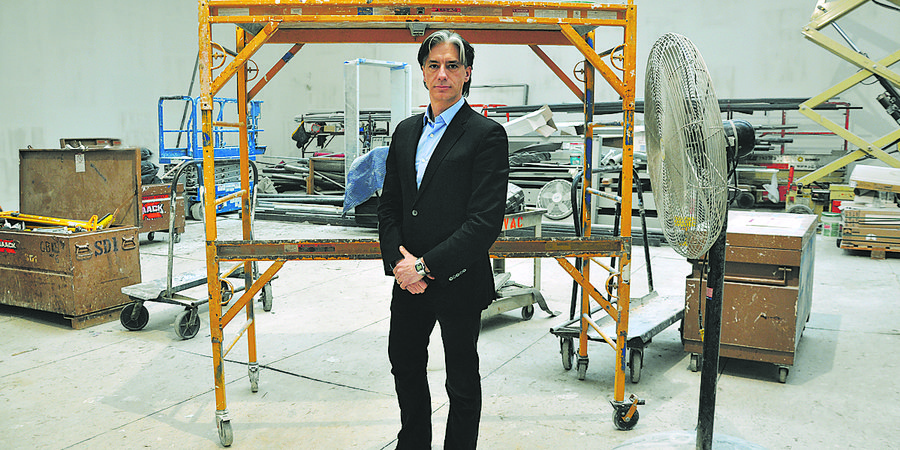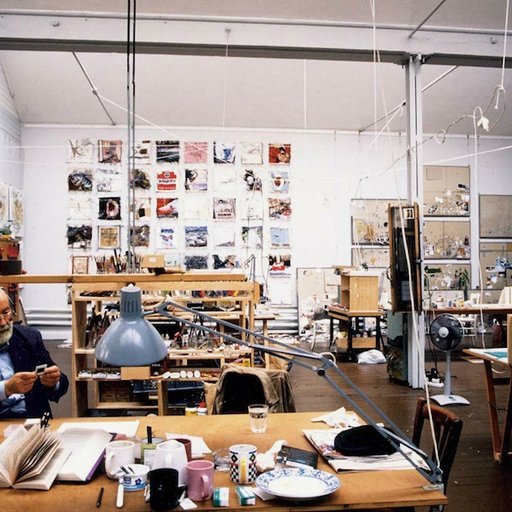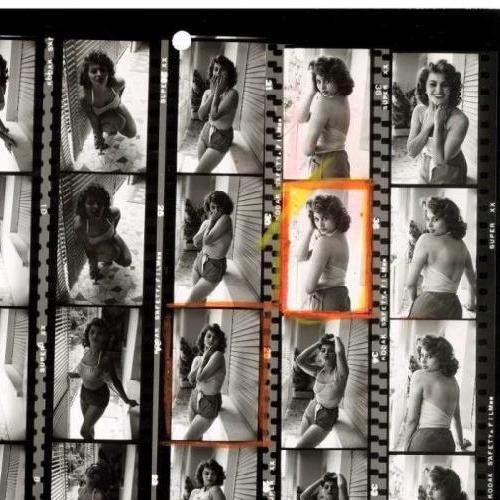After 16 years of running his own gallery, most of the time with former partner Lucien Terras, Christopher D'Amelio signed on earlier this year to help direct David Zwirner's new 20th Street gallery—which is devoted to shows of secondary-market art—with Kristine Bell. D'Amelio sat down with Artspace to discuss how he came to join the German superdealer, why the secondary market is critical for supporting emerging artists, and how to educate buyers to become master collectors.
You've suggested in the past that a category has emerged which we might call "Contemporary Masters." What would you say is the criteria for this category and who fits the bill?
If you think of the 1980s, some of those artists have risen to a level where—I don’t like the term "mid-career"—but they've become masters. It's a group of artists in their 50s and 60s that are at a level where you can start to look at their importance and how they influence young artists. Gerhard Richter is, of course, a master, so is Peter Doig, Christopher Wool, Robert Gober, Rachel Harrison, Rudolf Stingel, Cady Noland. Noland's work always looks shockingly new, and I think Isa Genzken is incredible—she’s a master in the sculptural realm whose work also looks forever contemporary.
How do you try to educate collectors on new artists and, in turn, make sure that your artists go to the right collectors?
Certain artists just get on the radar and then people want to collect their work without knowing why. It’s the gallery’s responsibility to protect the artist and the market from anything completely ridiculous happening. We have all seen primary market works going for $100,000 out of the gallery and then selling for $500,000 the same day at auction. So what do you do? You’re very careful who you sell the work to and you make sure that it’s going to a collection that you trust. It’s not even a question of hierarchy, it’s a question of trust. I want to know, what are you doing as a collector? What is your goal? Are you going to build a collection that’s long-term? Are you going to be speculating? Of course we’ll try to help clients find everything they want, but I think the only way to combat overly trendy buying habits is to also encourage discussions with them on the more challenging work. It takes time to see how an artist like On Kawara has devoted his life to his work and hasn’t wavered for 50 years. That’s so beautiful; his work is like a life poem, it’s almost more about life than a painting of somebody’s life. So I think that takes time and the galleries play a pivotal role in helping educate, pushing the dialogue, and then, 20 years later, people will realize, “Oh wow, this is such an important artist.”
David Zwirner first approached you about working for him back in 1996, and then again in May 2012, shortly after you opened your solo venture, D'Amelio Gallery. What made you change your mind this time around?
David came to me in May of last year and said, "This is going to be a bit of a surprise, but would you consider joining the gallery as a partner?" It came completely out of left field, and I said, "David, not only do I have a gallery, but I’m just in the process of reinvigorating it and it’s going really well." In fact, 2012 was the best year we ever had as D’Amelio Gallery, by three times. We hired new staff, renovated, narrowed down to a core group of artists, did more art fairs, more advertising. I said, "I’m flattered," and "no" was going to come out of my mouth when he said, "You don’t have to answer now, I just needed to tell you." I almost didn’t want to think about it at all for a while. I was close with David and other senior people at the gallery, and I knew the program very well. Then, in August, while I was on vacation, I admitted to myself that I wanted to do it. This gallery was growing and defining itself as a unique place in the art world. The new space on 20th Street was going to be phenomenal. Then late last year he told me that Yayoi Kusama was going to be represented by the gallery, and she’s an artist I specialized in on the secondary market since being at Paula Cooper. In the end, I knew I would regret not saying yes.
Was there an appeal in moving from a mid-size gallery to a much larger operation?
D'Amelio Gallery was one of the top 25 or so galleries in the city, but the top 10, mainly the top five, are so enormous that being in that mid-zone is a very difficult place to be. In a mid-sized gallery, it was always an uphill battle, to get an artist, keep an artist, get into an art fair, get press. We had to grow. But that’s a five-year commitment—if you’re successful. With Zwirner, I just had to say "yes," and I’m here with the gallery that I think has most positive momentum right now.
What will be your main responsibilities at Zwirner? Will you be organizing any exhibitions?
Kristine Bell and I are the two partners at 20th Street. I work with the Judd Foundation, and Donald Judd has always has been one of my favorite artists, so that is such a thrill. I was involved with the work at Pace and at Paula Cooper Gallery, and remained involved on my own for years. Zwirner's exhibition schedule is about two years ahead, and within time some of the ideas I have for historical or one-person shows should have the opportunity to get implemented. We are planning a 1980s show, which is an effort that will be done in-house by the people here who have first-hand experience with that period—I remember seeing the first Jeff Koons show, the first Matthew Barney show, the first Felix Gonzalez-Torres show.
David Zwirner has said in the past that big galleries rely on mid-sized ones like D'Amelio Terras in order to cultivate younger artists. How did you stay in business for so long, and what can other galleries at this level do to survive?
The challenge with Chelsea is the cost of running a gallery. You could have a huge gallery in Los Angeles and potentially in Chicago and it wouldn’t cost you so much to run. But New York and London are unique: you benefit from a lively collecting body, but the costs in the middle are significant. If you’re talking about the top 25 galleries, kind of where my former galleries left off, we had to grow or change. It becomes harder to give young artists their first shows. At D'Amelio, we had established artists like Robert Moskowitz and Polly Apfelbaum, but we also liked to give artists their first shows and its very difficult to cultivate a new group of artists when you have a $150,000 overhead and their art is priced at $5,000 and $10,000. So you have to rely on other sales and resales in the background. A lot of galleries don’t do resale, but we were knowledgeable about Kusama, Judd, Noland, so we could do that. There really is a problem in the middle. It's very important that artists are cultivated and helped in the middle portion of their career by galleries other than just huge galleries. Michelle Maccarone is a good example of that with Carol Bove. Last year, David Zwirner formed a partnership with Maccarone to jointly represent Carol, and it is a very successful model.
Does the problem hinge also on a growing unwillingness on the part of collectors to buy work from lesser-known artists?
When I was at Paula Cooper in the early- to mid-1990s, I would say that 50 to 60 percent of clients were those who were coming out of their way to see new work. When Paula first opened in SoHo in the late '60s, that percentage was probably closer to 100. Often I would hear stories form Paula's earliest clients like, “Every time I’m in from Fort Worth, I would venture down to SoHo, walk up those flights of stairs, and see a challenging, thought-provoking show at Paula Cooper, John Weber, or others." Those days were really about support. It was like, "Thank goodness, you bought something and the artist is going to be able to keep their studio for another six months and make another great piece." Collectors weren’t coming in with a list of names they wanted.
Now, when the market gets going around something new, it’s not necessarily about support—it’s about having something collectible and rare. Everyone thinks, "I've gotta get one," and it almost ends with people potentially resenting the artists for their prices going up so fast. It's harder to find that rare group of really committed, adventurous contemporary collectors who don’t even know why they’re buying that object or what they’re going to do with it or where they’re going to put it, but they just love it. That’s the best kind of collector because, 30 years later, they have all the Bruce Nauman sculptures and all the Cy Twombly paintings. Then suddenly people get it, and now everybody wants a Donald Judd. The same thing could be true with Christopher Wool or Mike Kelley, whose career was not easy to understand for a long time. But those are the best kinds—like when I hear, “You told me to buy this in 1996 and I didn’t understand it, and now I get it!” Yeah, I told you.
David Zwirner Gallery participates in 15 art fairs a year. How involved will you be in the fairs and which are you preparing for next?
I was in Basel and Hong Kong, and I’m going to definitely have a focus on Chicago. I did EXPO Chicago last year as D’Amelio Gallery and Zwirner did it as well. I think it will be much better attended this year because it is such an easy trip and there is such a powerful group of collectors in the greater Midwestern region—and not all those people go to Miami or Frieze or Basel. Right now, the Chicago fair is an excellent collecting opportunity. We will bring truly exceptional inventory because the museums and the collectors there are extremely important. It’s also not like some other fairs where some clients can’t even get a VIP pass. In Chicago, you will get in and not everything will be sold out in the first ten minutes. You could probably even come on Friday and still find something great. As a collector, there's less competition so it’s actually the best environment to go to buy something.
























